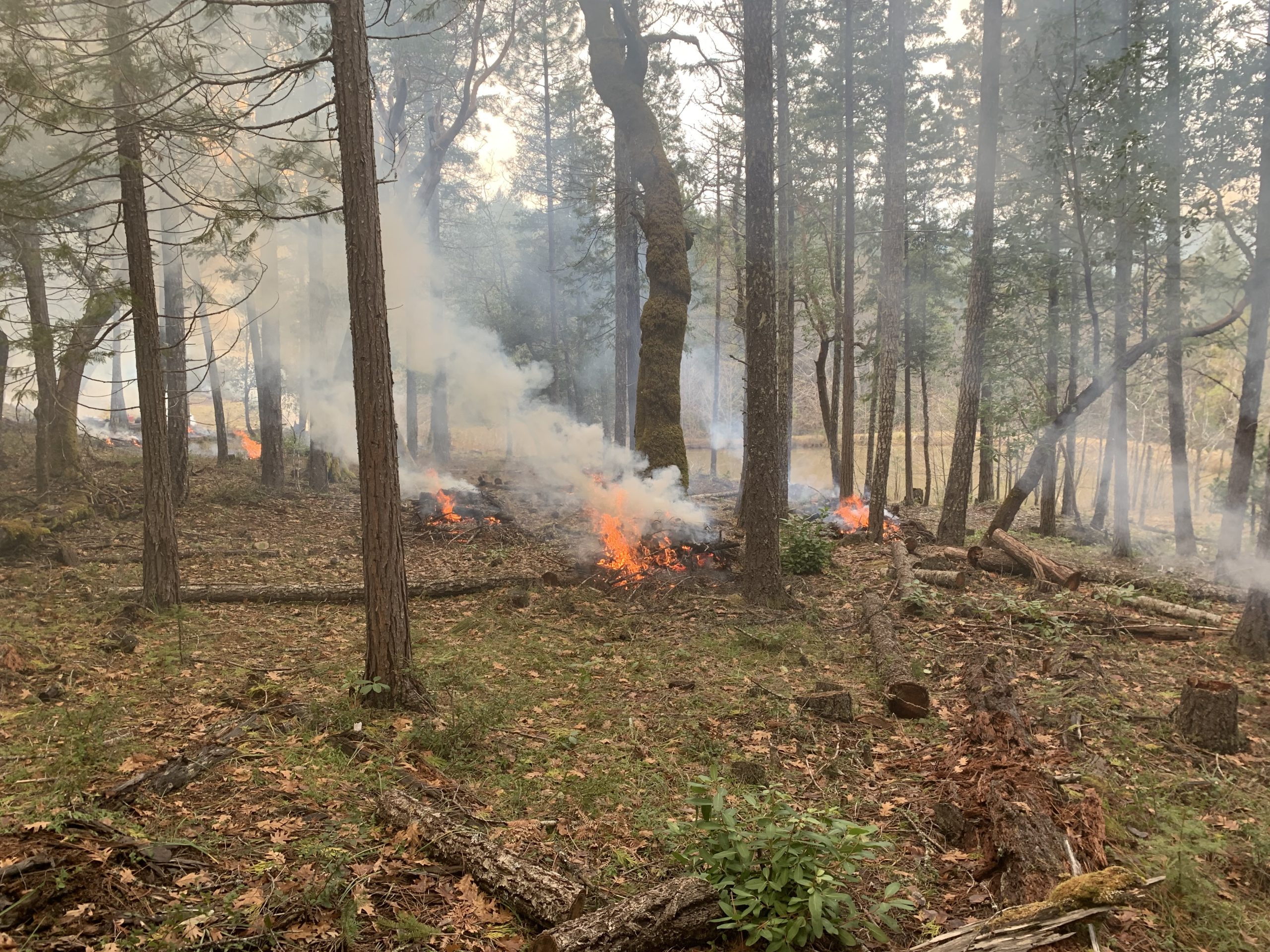Your Forest Update for May 2022
Where is the Upper Applegate Watershed restoration project?
Applegater readers drive through the Upper Applegate Watershed Restoration Project (UAW) on the way to Applegate Lake, south of Ruch, or out Beaver Creek along the Flumet Flat Campground or up to Burnt Peak. The 52,000-acre project area spreads on either side of the road, comprised primarily of public land managed by the Rogue River-Siskiyou National Forest and the Medford District Bureau of Land Management. Across that expanse, 18,000 acres have been strategically selected for treatment to mitigate wildfire risk and enhance wildlife habitat.
In the first phase, Lomakatsi Restoration Project collaborated with the U.S. Forest Service, Bureau of Land Management, and other members of the Rogue Forest Partners to develop restoration prescriptions. Their crews marked treatment areas on 273 acres near Beaver Creek and began ecological thinning there in June 2021, with hand pile burning scheduled as weather conditions allow.
The second phase will treat 1,100 acres selected for proximity to adjacent private lands, strategic ridgelines, and existing primary roads and expand on other recently completed treatments. Some commercial by-products will be removed as part of UAW implementation utilizing helicopter and ground-based work. Lomakatsi has already laid out the units and written prescriptions to prepare for cutting and piling fuels in Fall 2022. With funding from the Oregon Watershed Enhancement Board, treatments will continue through 2024. Additional acres of restoration will be identified within the NEPA-approved plan as funding is secured.
These restoration treatments prioritize protecting larger and older legacy trees by thinning overly-dense smaller trees and brush. Such “ladder fuels” can carry a fire up into the canopy, significantly increasing tree mortality compared to a “ground fire.” Ecological thinning reduces competition and returns the forest to conditions better aligned with both historical natural range of conditions, making it more resilient to wildfire, insects, and disease and better adapted to ongoing climate change.
Walking in these areas, one will see a more open understory, except for the piled slash waiting for ideal burning conditions. These phases of work set the stage for professional fire crews to implement controlled understory burning to reintroduce the needed functions of natural fires while enhancing ecological benefits and wildfire risk reduction.
The Rogue Forest Partners thank the community for their patience and understanding that such treatment takes time. Our goal is to keep the community updated, continue to provide opportunities for public dialogue, and demonstrate the benefits of restoration treatments through multi-party monitoring.
Save the Date: Community Field Tour on June 4th
Join the Rogue Forest Partners for a half-day field trip to see, learn and talk about the ongoing and expanding use of ecological thinning and prescribed fire in the forested slopes of Applegate Valley.
Partners will give an overview of the restoration work underway in the Upper Applegate Watershed project area, how the group is leveraging new state and federal funding for strategic wildfire mitigation, and what additional restoration efforts will take place over the next year.
Pre-registration is required! To provide transportation to the field-tour stops, we need all interested participants to pre-register online at: bit.ly/Upper-Applegate
When: Saturday, June 4th, from 9 am-12 pm.
Where: The pick-up location will be sent to all registrants as the date approaches.
This collaborative effort between nonprofits, public agencies, tribes, municipalities, and fire districts addresses the need for wildfire fuels reduction immediately adjacent to our community and for healthier, more resilient forests. We hope you can join us on June 4th!
Photo: Lomakatsi conducts a controlled pile burn in the Williams Project area to enhance wildlife habitat, protect large legacy trees, and reduce the risk of severe wildfire to the community.

